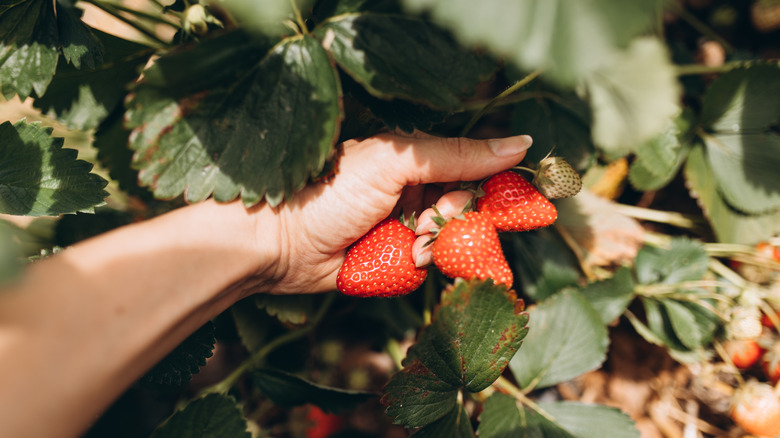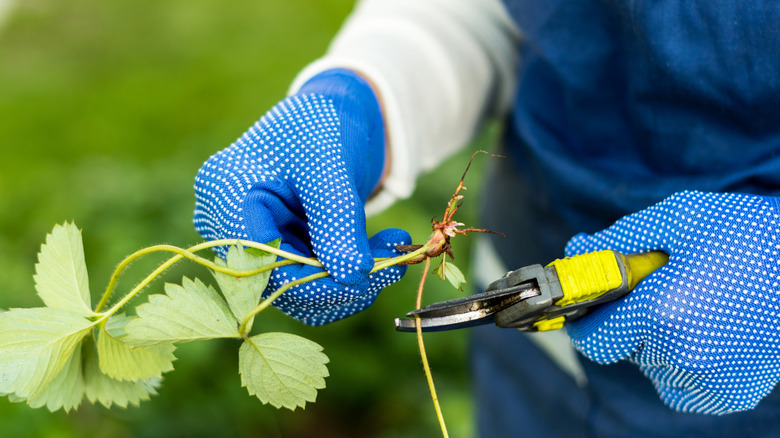How To Grow More Strawberries Without Buying New Plants
When strawberry season is in full swing, it's time to start thinking about growing those juicy, delectable, conical berries — everyone's favorite fruit-bearing plant. Little known fact: the strawberry is not actually a berry at all, botanically speaking, because its seeds are on the outside. Each of those tiny seeds is considered an individual fruit sitting atop the bright red fleshy part that we eat. Fruity semantics aside, strawberries (Fragaria x ananassa) are one of those plants that can easily be regrown from its own parts to make more — and more robust — future crops. Using this type of propagation is a great way to fill your gardens with all types of new plants.
Propagating strawberries works by way of its runners, which are stems that grow horizontally out of the plants. These are also called stolons. These stolons stay aboveground and produce little clones of the strawberry plant, known as daughter plants. Not only can you use these runners to create new strawberry plants, but trimming them is also beneficial to your existing strawberries.
If they're not thinned, the plants will send out so many runners that it takes too much of the plant's energy to maintain them. It can also lead your strawberry plants to run amok and become invasive in your garden. Therefore, removing the runners at regular intervals is pivotal to your crop's success. Their removal will lead to larger fruits, and the runners can be used to cultivate more crops without purchasing new seeds or plants.
How to use runners to grow new strawberry plants
In order to make the best use of your strawberry plant's runners, start by cutting a few of them off of a healthy plant using clean scissors or garden shears. The mother plant you're cutting from should be at least one year old. The best runners to propagate have visible roots and at least two sets of leaves attached to the stem. Point the leaves up and sink the root or "tail" of the runner into potting soil in pots or directly into your garden bed. Keep these young plants moist and the runners should root within 10 days.
Cutting and replanting several runners each year is the best way to keep your strawberry crop healthy. Most strawberry plants have a lifespan of just three to five years. By growing these new clone plants, you can keep your strawberry crop in a healthy rotation of young and vibrant new daughters (and granddaughters). Strawberries will grow best in full sun, or at least six hours per day, and should be watched closely for insect infestation, root rot, and gray mold. If all of the multiple generations of your strawberry ladies stay healthy, you'll have an endless bounty for life at no extra expense to you.

